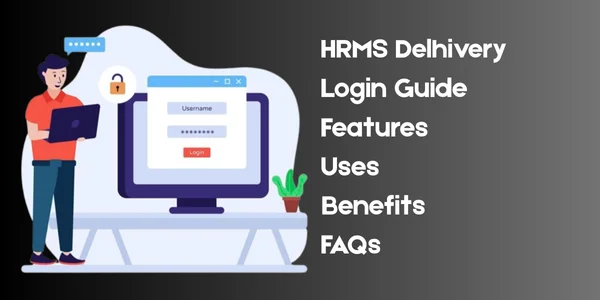Introduction
In an increasingly interconnected world, FTAAsiaTrading technology is rapidly reshaping how businesses engage with markets across Asia and beyond. From AI-powered analytics to blockchain-driven supply chain transparency, FTAAsiaTrading blends cutting-edge innovation with regional expertise to boost efficiency, security, and profitability.
But what exactly is FTAAsiaTrading technology? How does it stand out in the crowded fintech landscape? And why should businesses urgently adopt these advancements to stay competitive?
This in-depth article answers these pressing questions and reveals how FTAAsiaTrading technology is not just a trend but a vital strategy for success in the modern global marketplace.
What is FTAAsiaTrading Technology?
FTAAsiaTrading technology refers to the suite of digital tools and platforms designed to facilitate seamless trading across Asian markets. It encompasses:
-
AI-driven market analysis to predict trends and optimize trading decisions
-
Blockchain integration for secure, transparent transactions
-
Real-time data monitoring to reduce risks and delays
-
Automated compliance checks to navigate complex regulations effortlessly
By leveraging these technologies, companies reduce operational friction, enhance decision-making, and expand market reach rapidly and securely.
Frequently Asked Questions About FTAAsiaTrading Technology
1. How Does FTAAsiaTrading Technology Improve Trade Efficiency?
By automating routine tasks and providing predictive insights, FTAAsiaTrading tech cuts down processing times by up to 40%, according to industry studies. This acceleration means faster shipment approvals, quicker payments, and minimized delays, which are crucial in today’s time-sensitive supply chains.
2. Is Security a Concern with This Technology?
On the contrary, FTAAsiaTrading leverages blockchain’s immutable ledger to safeguard data integrity and prevent fraud. Encryption protocols and multi-factor authentication further protect sensitive information, earning trust from both regulators and partners.
3. Can Small and Medium Businesses (SMBs) Benefit?
Absolutely. FTAAsiaTrading technology levels the playing field by providing SMBs access to tools traditionally reserved for large corporations—such as AI market forecasting and automated customs documentation—reducing entry barriers and operational costs.
4. What Role Does AI Play in FTAAsiaTrading?
AI analyzes massive datasets in real time, uncovering hidden patterns and opportunities in fluctuating markets. This enables traders to make informed, proactive decisions rather than reacting to outdated information.
5. How Does This Technology Help with Regulatory Compliance?
FTAAsiaTrading platforms integrate real-time compliance checks tailored to various Asian markets, ensuring all transactions align with local laws and trade agreements. This minimizes costly penalties and operational interruptions.
Key Benefits and Industry Insights
-
70% of companies using AI-powered trading tools report significantly improved profitability within 12 months.
-
Blockchain-based trade finance reduces fraud risk by up to 80%, according to recent reports.
-
Automation in customs clearance cuts paperwork errors by nearly 90%.
-
Real-time analytics improve market responsiveness, helping firms capture 10-15% more opportunities in volatile environments.
These numbers underscore the game-changing potential of FTAAsiaTrading technology for businesses willing to innovate and adapt.
Overcoming Common Challenges with FTAAsiaTrading Technology
While promising, the adoption of FTAAsiaTrading technology involves addressing several obstacles:
-
Integration Complexity: Seamlessly incorporating new tools into legacy systems requires expert support and gradual rollout strategies.
-
Training Needs: Employees must be equipped with skills to interpret AI insights and manage automated workflows effectively.
-
Data Privacy Concerns: Strict adherence to data protection laws like GDPR and Asia’s emerging privacy frameworks is essential to build trust.
-
Cost Management: Initial investment can be significant; however, the long-term ROI typically justifies the expense.
By proactively tackling these challenges, companies unlock unmatched efficiency and competitive advantage.
Practical Strategies to Maximize FTAAsiaTrading Technology
-
Start with Pilot Projects: Test AI algorithms or blockchain features on smaller trade lanes before full-scale deployment.
-
Leverage Data Partnerships: Collaborate with regional data providers for richer, localized market insights.
-
Focus on User-Friendly Interfaces: Choose platforms with intuitive dashboards to encourage employee adoption and reduce errors.
-
Implement Continuous Training: Regular workshops and e-learning ensure teams stay ahead of tech updates and evolving trade policies.
-
Monitor KPIs Closely: Track efficiency gains, error reduction, and compliance rates to measure success and optimize processes.
Conclusion
FTAAsiaTrading technology is revolutionizing trade dynamics across Asia by merging AI, blockchain, and automation into a cohesive, powerful ecosystem. Businesses embracing these advancements experience faster processes, stronger security, and superior market intelligence—critical factors to thrive amid increasing competition and complex regulations.
Waiting to adopt these technologies risks falling behind in an era where speed, accuracy, and transparency dictate success. The future of Asian trade is digital, and companies ready to innovate today will capture tomorrow’s growth.


